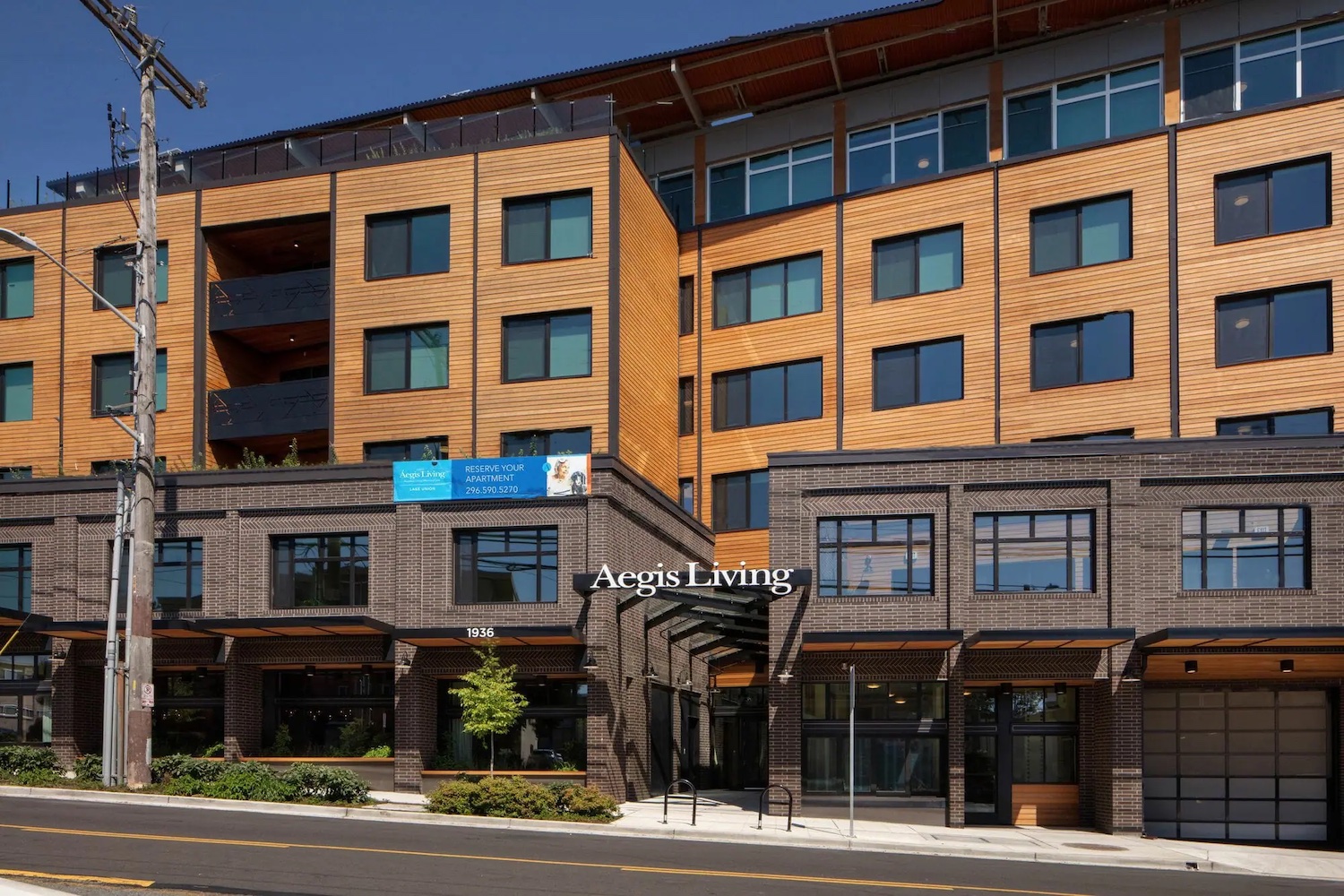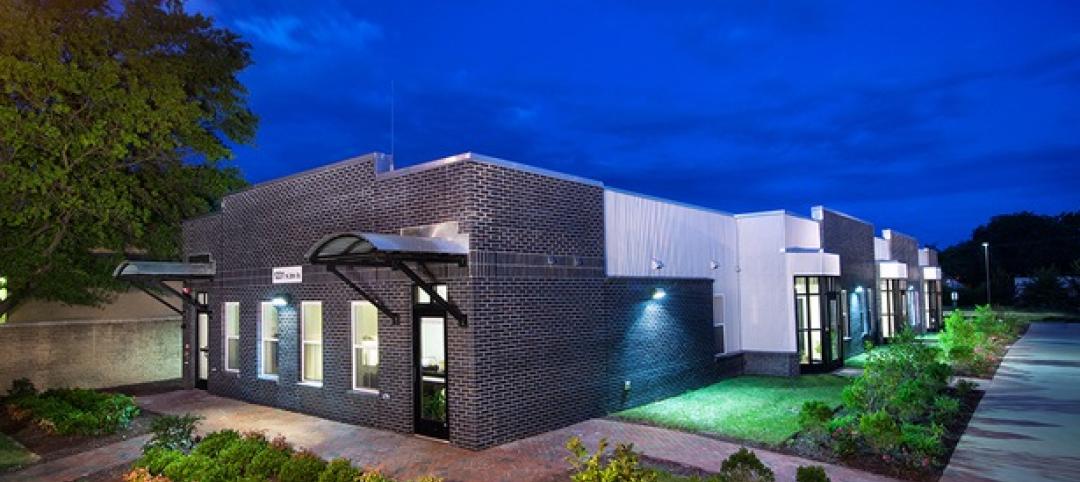Aegis Living Lake Union in Seattle is the world’s first assisted living community designed to meet the rigorous Living Building Challenge certification. Completed in 2022, the Ankrom Moisan-designed, 70,000 sf-building is fully electrified. All commercial dryers, domestic hot water, and kitchen equipment are powered by electricity in lieu of gas, which reduces the facility’s carbon footprint.
The community will source power through an onsite solar array and an offsite solar energy farm. Key energy reduction measures include improved exterior insulation, triple pane windows, heat recovery ventilation, heat pump heating and cooling, LED lighting and lighting control sensors, and installation of all high-efficiency appliances.
The building provides 79 living units, including a mix of studio and one-bedroom options with some apartments dedicated to memory care. Amenities include a spa/wellness center with a salon, massage suite, and fitness center. A variety of gathering spaces are available for residents to spend time with family, friends, and neighbors, including an onsite cinema and sky lounge terrace with views of Lake Union.
The aesthetics and environmentalism of Aegis Living Lake Union were inspired by the historic rowing clubs and culture of the area. The exterior consists of natural materials including lapped cedar siding and rough brick, and the surrounding landscaping has been thoughtfully curated to consider biodiversity and rainfall. The pattern of cedar cladding on the north side of the building was designed to evoke the image of oars through water, while the unique steel pattern entry canopy echoes the rowing shell and the shape of the oars.
The top-level roof overhang was extended to create additional roof area to accommodate more rooftop solar panels. These strong shapes and patterns can be seen in the exterior brickwork and entry canopy and continue into the interior of the building.
The lobby presents a tribute to the 1936 University of Washington men’s rowing team that took gold at the Berlin Olympics. An original Pocock racing shell is suspended from the sustainably sourced wood ceiling—defined by a geometric composition suggesting rowing cadence and waves. Nature is also frequently alluded to in many details. Biophilic principles are evidenced through natural light spilling through wide windows, and a greenspace and watercourse offering peace and mindfulness via patterns in the carpet, the shape of the lighting fixtures, and the art adorning the walls.
On the building team:
Owner and/or developer: Aegis Senior Living Communities, LLC
Design architect: Ankrom Moisan
Architect of record: Ankrom Moisan
MEP engineer: PAE Engineers
Structural engineer: Bykonen Carter Quinn
General contractor/construction manager: Absher Construction
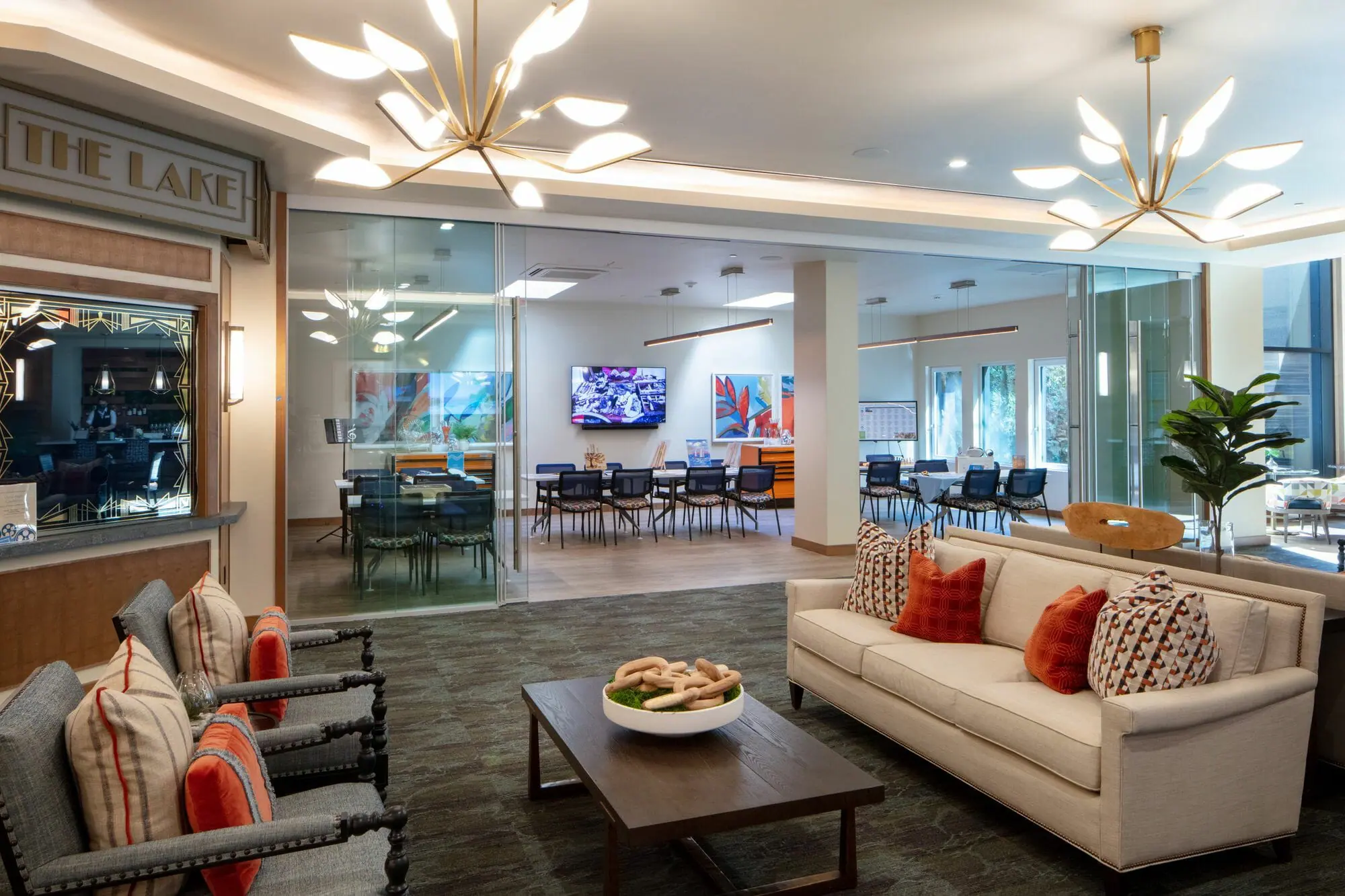
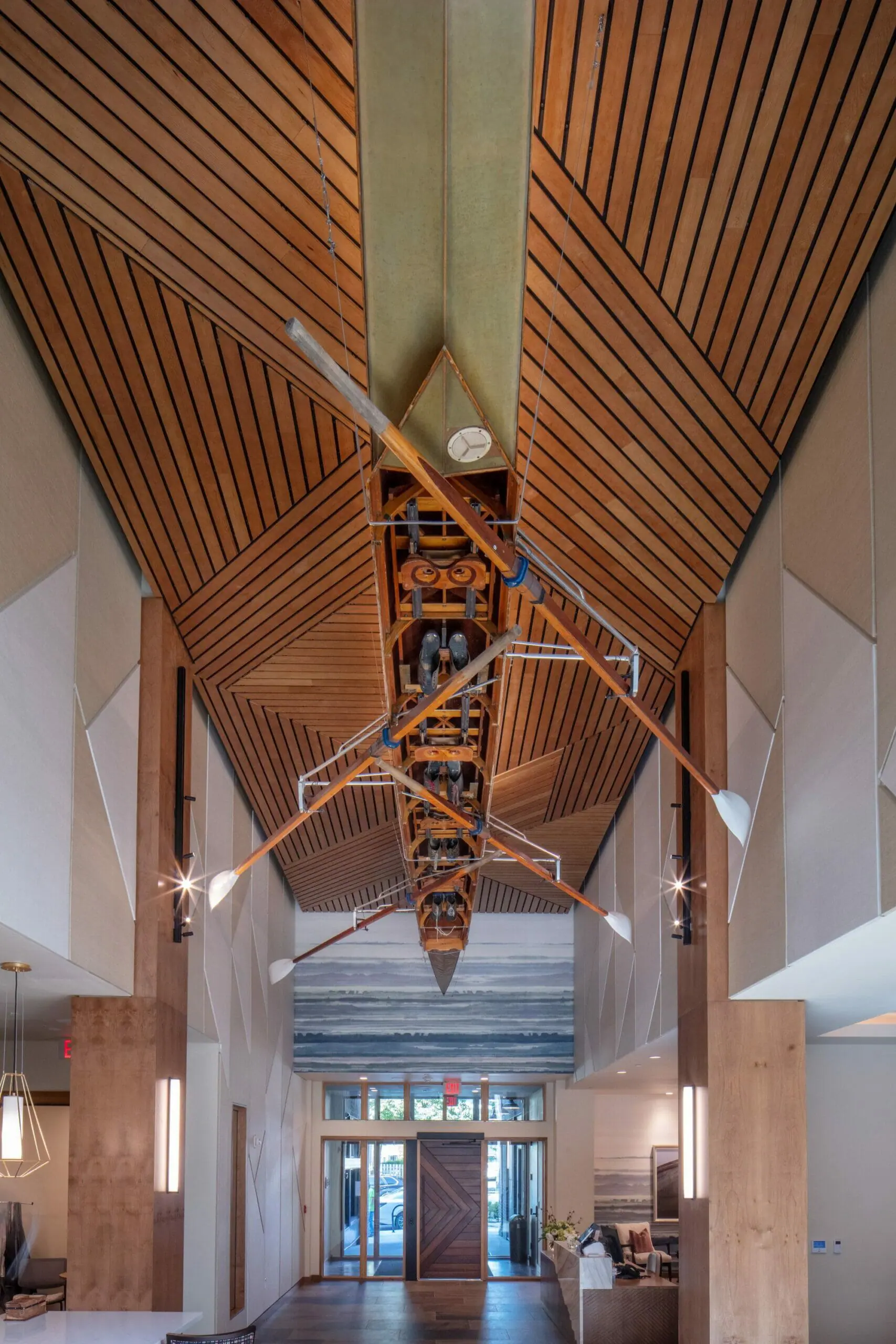
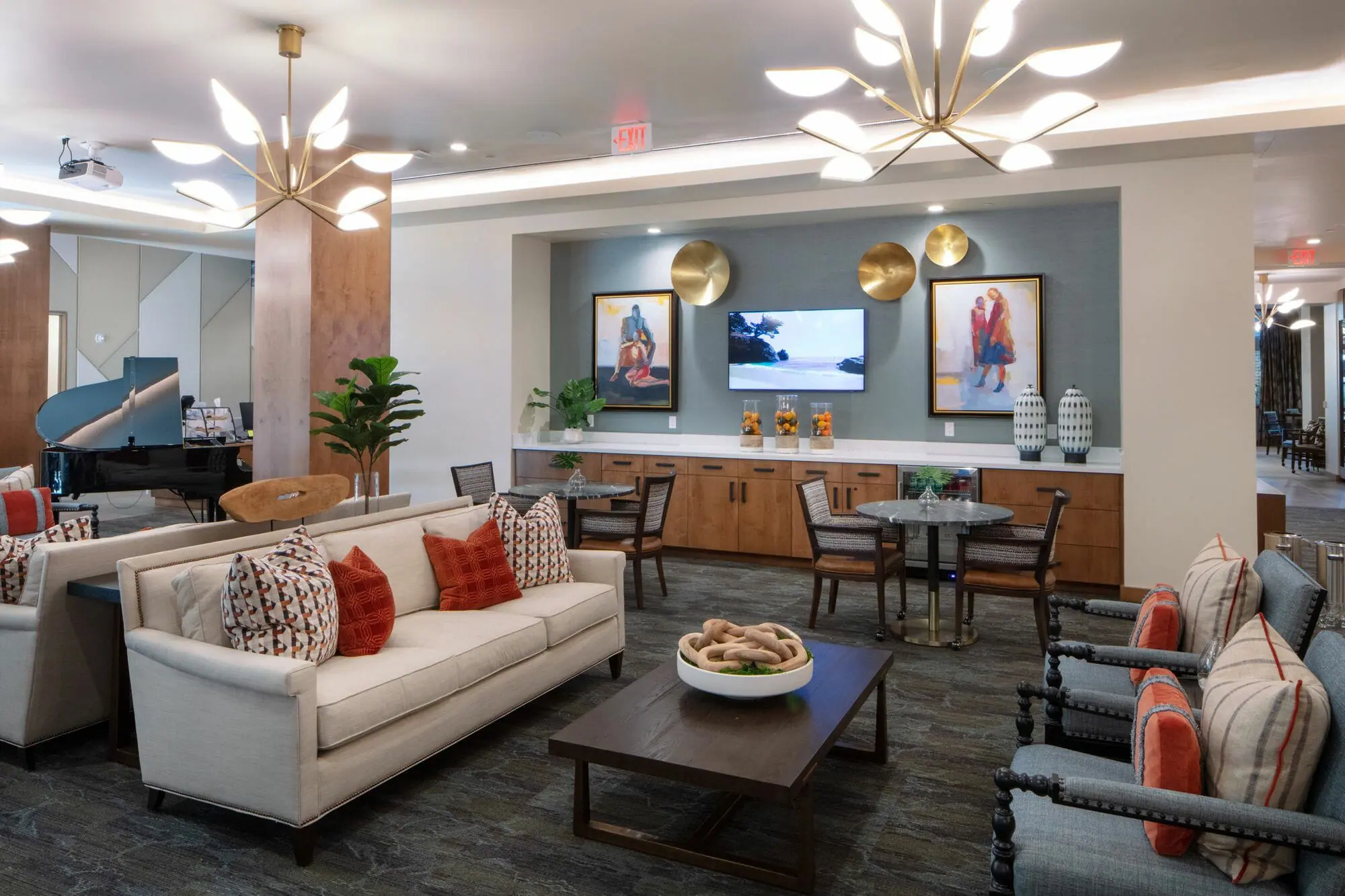

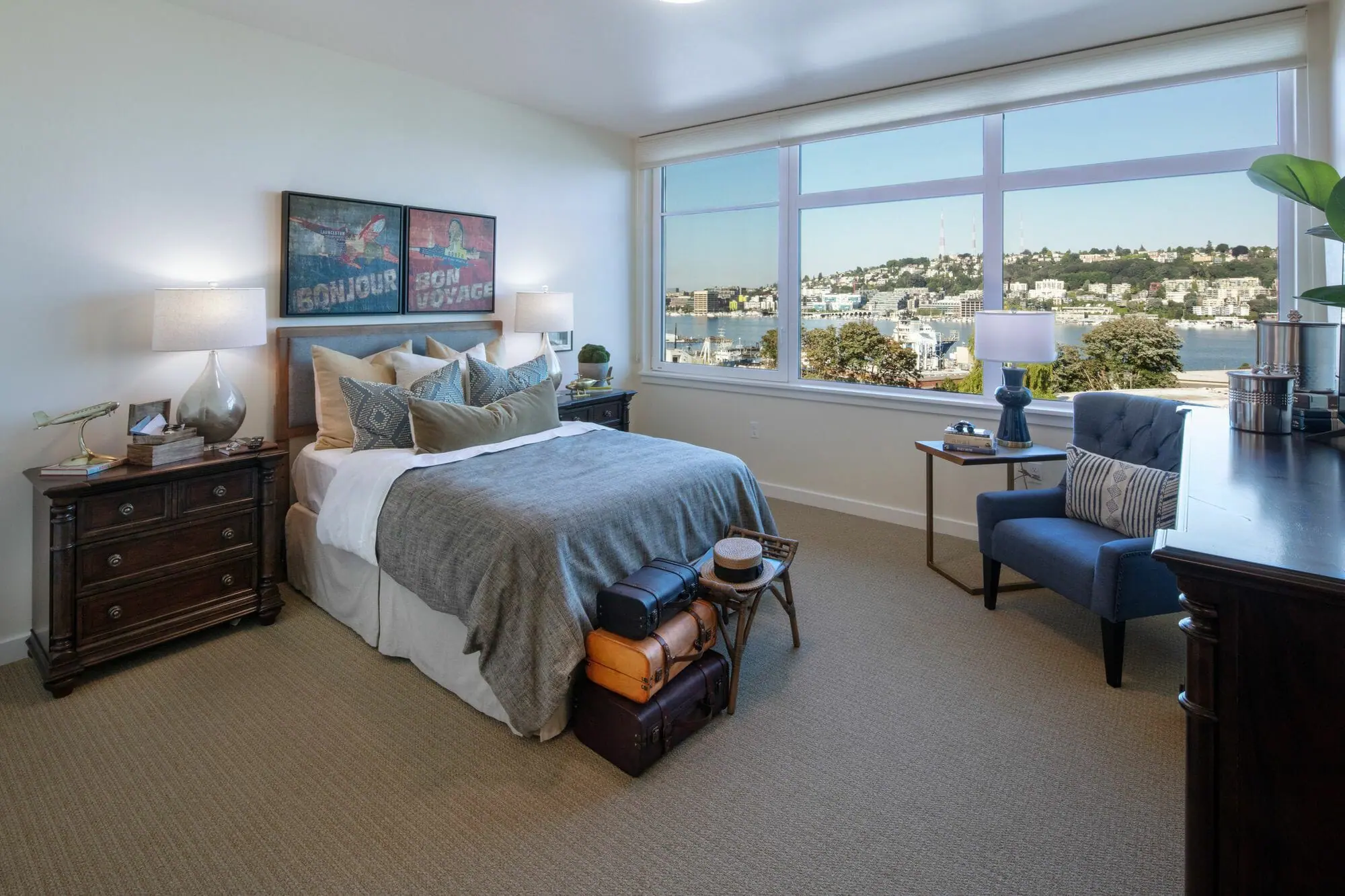
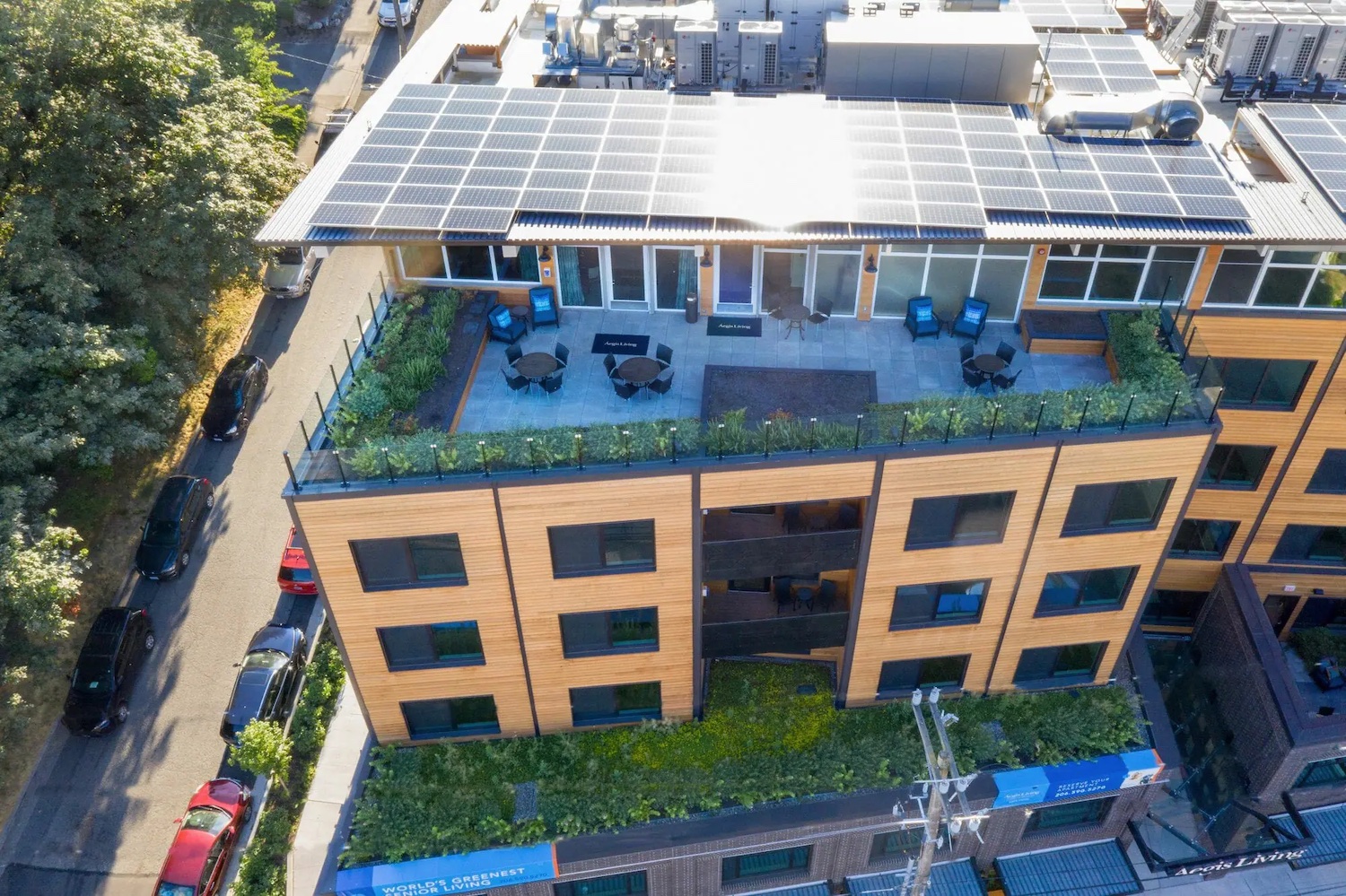
Related Stories
| Nov 25, 2013
Building Teams need to help owners avoid 'operational stray'
"Operational stray" occurs when a building’s MEP systems don’t work the way they should. Even the most well-designed and constructed building can stray from perfection—and that can cost the owner a ton in unnecessary utility costs. But help is on the way.
| Nov 19, 2013
Top 10 green building products for 2014
Assa Abloy's power-over-ethernet access-control locks and Schüco's retrofit façade system are among the products to make BuildingGreen Inc.'s annual Top-10 Green Building Products list.
| Nov 19, 2013
Net-zero senior housing project aimed at low-income residents in Virginia
A big driver to achieve net-zero was to offer affordable housing with reduced energy costs for low-income seniors.
| Nov 13, 2013
Installed capacity of geothermal heat pumps to grow by 150% by 2020, says study
The worldwide installed capacity of GHP systems will reach 127.4 gigawatts-thermal over the next seven years, growth of nearly 150%, according to a recent report from Navigant Research.
| Oct 30, 2013
11 hot BIM/VDC topics for 2013
If you like to geek out on building information modeling and virtual design and construction, you should enjoy this overview of the top BIM/VDC topics.
| Oct 28, 2013
Urban growth doesn’t have to destroy nature—it can work with it
Our collective desire to live in cities has never been stronger. According to the World Health Organization, 60% of the world’s population will live in a city by 2030. As urban populations swell, what people demand from their cities is evolving.
| Oct 18, 2013
Researchers discover tension-fusing properties of metal
When a group of MIT researchers recently discovered that stress can cause metal alloy to fuse rather than break apart, they assumed it must be a mistake. It wasn't. The surprising finding could lead to self-healing materials that repair early damage before it has a chance to spread.
| Sep 19, 2013
What we can learn from the world’s greenest buildings
Renowned green building author, Jerry Yudelson, offers five valuable lessons for designers, contractors, and building owners, based on a study of 55 high-performance projects from around the world.
| Sep 19, 2013
6 emerging energy-management glazing technologies
Phase-change materials, electrochromic glass, and building-integrated PVs are among the breakthrough glazing technologies that are taking energy performance to a new level.
| Sep 19, 2013
Roof renovation tips: Making the choice between overlayment and tear-off
When embarking upon a roofing renovation project, one of the first decisions for the Building Team is whether to tear off and replace the existing roof or to overlay the new roof right on top of the old one. Roofing experts offer guidance on making this assessment.



